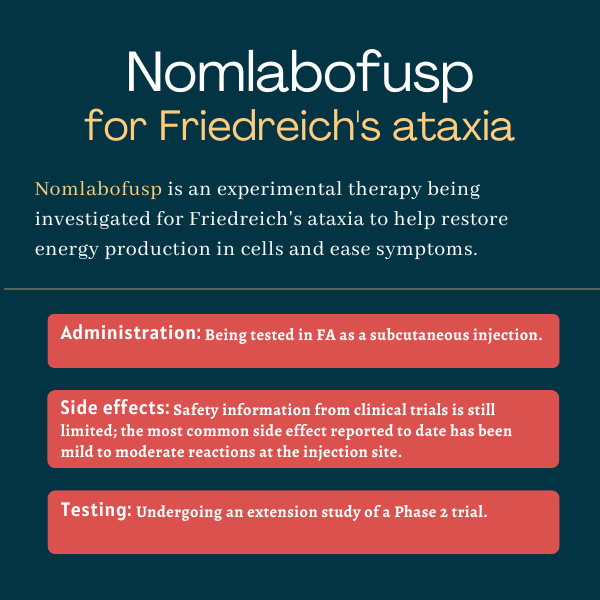FAQs about Nomlafobusp in Friedreich's ataxia
Nomlafobusp is in the early stages of clinical testing and is currently undergoing an extension study of a completed Phase 2 trial in people with Friedreich’s ataxia.
Nomlafobusp is an experimental therapy that is not yet approved for the treatment of Friedreich’s ataxia. It is designed to deliver a functional version of frataxin — a protein whose shortage causes Friedreich’s ataxia — to help improve the functionality of mitochondria, the so-called “powerhouses” of cells. This is expected to help ease FA symptoms.
Existing information from clinical trials does not mention a possible interaction between alcohol and nomlafobusp. However, clinical testing of nomlafobusp is still in early stages, so more information about treatment interactions and side effects is needed.
Efficacy results of nomlafobusp in clinical trials are still scarce, so more data will be needed to have an indication of how soon patients may see benefits with treatment. Data from Phase 1 (NCT04519567) and Phase 2 (NCT05579691) trials suggest consistent increases in levels of frataxin, the protein whose shortage is a hallmark of Friedreich’s ataxia, about two weeks into therapy, but whether and how that will translate into clinical benefits remains to be determined.
As nomlafobuspis still in Phase 2 clinical testing, information about potential side effects associated with this therapy is still scarce. Available trial data in people with Friedreich’s ataxia indicate that mild to moderate reactions at the injection site were the most common side effects reported to date.
Related Articles

 Fact-checked by
Fact-checked by 



